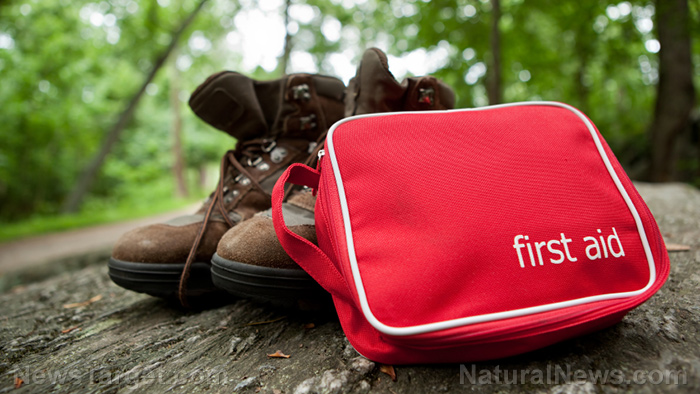Don’t wait for these 8 emergencies to start saving
08/06/2019 / By Melissa Smith

Many people fail to financially prepare for the future. Having an emergency savings fund is important to the financial security of your family. Here are eight emergencies that could cause you financial stress and difficulty. (h/t: TheOrganicPrepper.com)
#1 Job loss or government shutdown
This is one of the main reasons why you need an emergency fund. You never know when you’ll lose your job. If you’re a government employee, you could lose your job due to furloughs and government shutdowns. Experts suggest saving at least six months’ worth of your income. This may cost $28,824 and you may need $30,000 emergency fund for this.
#2 Flooding
The cost of flood damage to homes is around $24,000 and the cost to personal property is about $3,000. Apparently, most insurance policies for homeowners and renters don’t cover flood damage. If you don’t have a separate flood insurance policy, you could be stuck with that bill. Property damage and loss are not the only expenses that come with flooding. You also need funds to pay for your temporary shelter, such as a hotel.
#3 Fire
Fire can severely damage a home, and it can typically cost from $3,000 to $27,000. This still depends on several factors, such as the extent of the damage and possible additional costs such as water damage repair, chemical damage repair, and soot removal.
#4 Hurricane or tornado
You need around $7,000 to $13,000 savings for damage repair caused by a hurricane or tornado. This still depends on how severe the damage is. In many cases, the damage is not covered by insurance, especially if flooding is also involved. You also have to plan for the potential loss of employment, higher gas prices, extensive repairs to your property, and the possibility of property loss. You also have to prepare for the costs of being away from home – such as hotel expenses – for an extended period.
#5 Earthquake
It is best to invest in protecting your home before an earthquake hits instead of paying for damage costs afterward, especially if you live near an active fault zone. Retrofitting, which costs between $3,600 and $6,3000, is done to prevent displacement from a house’s concrete foundation. This would make your house safe and less likely to suffer damage during an earthquake.
#6 Medical emergency
A trip to the emergency room could cause a serious financial strain for you, especially if you don’t have health insurance. A medical emergency can cost at least $1,500 – but this can exceed by a lot. Research published in the American Journal of Public Health revealed that medical problems contributed to 66.5 percent of all bankruptcies.
#7 Car accident
The estimated cost of a car accident ranges between $775 and $1,500. However, this still depends on your insurance coverage, the severity of the accident, legal costs, fines, and other factors.
#8 Funeral costs
The sudden death of a loved one is not only tragic, but it can also leave you with unexpected financial difficulty. Cremation with a memorial service can cost about $8,000, while the average cost of a traditional burial service including a casket and visitation is $15,000.
Unfortunately, many Americans are not prepared to handle an unplanned expense. A survey conducted by the Federal Reserve Board revealed that 39 percent of Americans could not handle a $400 unplanned expense. If you’re one of those, then consider saving right now. You can start by creating a budget, seeing where your money goes on a regular basis, and finding ways to cut back on some expenses. (Related: Preppers save for a rainy day: Why financial planning is crucial for surviving an economic downturn.)
Financial preparedness is an important part of prepping. It may seem challenging, but you’ll thank yourself later when that rainy day arrives. This can help you survive and save you from a mountain of stress and debt.
Sources include:
Tagged Under: accidents, Collapse, disaster, emergency, emergency savings, Financial Disaster, financial planning, financial preparedness, job loss, medical emergency, money, preparedness, prepper, prepping, self-reliance, survival, survivalist, tornado, unemployment
RECENT NEWS & ARTICLES
COPYRIGHT © 2017 DISASTER NEWS



















